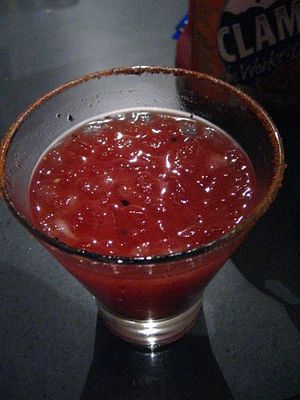I’ve always had a difficult time pronouncing Worcestershire sauce (the correct pronunciation is wOOs’ter-shîr). But I do love the taste of it. I’ll admit I don’t know very much about food, but I do know that Worcestershire sauce definitely has a lot of zing and flair when compared to other sauces.
Which brings me to my main point. A few days ago I was having a meal and dipping some meat into some Worcestershire sauce and the bottle was setting next to me and I glanced at the label and said out loud to my wife who simply ignored me: “I wonder what the ingredients are in Worcestershire sauce that produce its unique tongue-zapping bite?” I grabbed the bottle and read the fine print where the ingredients were listed:
Vinegar, molasses, water, peppers, corn syrup, salt, soybean, corn protein, …
Nothing out of the ordinary so far. I read on.
Garlic, onions, lemon oil, cloves, anchovies, caramel coloring…
Wait a second. Anchovies? Aren’t those little fish? One definition for anchovies that I later received from typing a ‘define: anchovies’ command into Google is: “small, silvery fish that are usually cured with salt.”
“Fish are in Worcestershire sauce?” I responded out loud and then looked over at my wife who was watching television and not paying any attention to me. At the very bottom of the label I saw listed in bold capital letters: “CONTAINS SOY AND FISH.”
Strange. My curiosity was piqued. I would have to consult my local library about this. According to the book, Big Secrets by William Poundstone, there are entire anchovies contained in bottles of Worcestershire sauce. Over time, the bodies of these small fish gradually dissolve into the sauce as it ages and ferments, and the meat of the anchovies falls off the bone. So where do the bones go? They also dissolve into the sauce. How can bones and skeletons dissolve in sauce, you may be wondering. Well, it’s a known fact of chemistry that if chicken bones are placed in vinegar, they will also dissolve after only a couple of months; and since the aging process of Worcestershire sauce (in large 6,000 gallon vats) before it’s released to the public is a minimum of two years, you probably won’t find any fish skeletons in the sauce any time soon.
Also, if you examine the very bottom of a bottle of Worcestershire sauce, you’ll most likely notice some dark brown sediment collected there, which is made up of various spices that have been added for flavor and other reasons. Coriander, cloves, crushed walnuts, brandy, mushrooms, mace, sherry, all of these are in various brands of Worcestershire sauce, but the overall salient ingredient is something called ‘asafetida,’ also known as “devil’s dung.” (You can see why most labels do not list this name, which comes from the spice’s foul aroma – when stored in a container, asafetida must be air tight so people don’t get nauseous from inhaling it.)
Asafetida is a bitter spice slightly similar to garlic that comes from a tall plant shaped similar to a carrot. Only a tiny amount of asafetida is used in Worcestershire sauce because of its extremely bitter taste, which lessens with the cooking process. Asafetida is also thought to aid digestion, reduce flatulence, and help with cases of bronchitis and asthma. Strangely enough, wolves like the smell of asafetida; and fisherman also use it to attract pike and catfish.
But anchovies and asafetida are not the only unusual ingredients in Worcestershire sauce. Guess what else it has? Meat. That’s correct. William Poundstone says in his book, Big Secrets, that either beef extract or actual pork liver is commonly added to most brands of Worcestershire sauce. And many of the major manufacturers do not admit this on their labels, although some of the lower brands will. For some reason, the big Worcestershire companies aren’t too proud of adding beef or liver to their sauces.
You may be wondering how pork and anchovies manage to keep from going bad in Worcestershire sauce if the bottles set on shelves that aren’t refrigerated. Well for one, the anchovies and meat have already been fermented; and secondly, the sugar and vinegar in the sauce prevents any harmful bacteria from setting in.
So there you have a few surprising ingredients you probably didn’t know were in Worcestershire sauce. Be careful, you never know what you may be consuming, even in common sauces.





